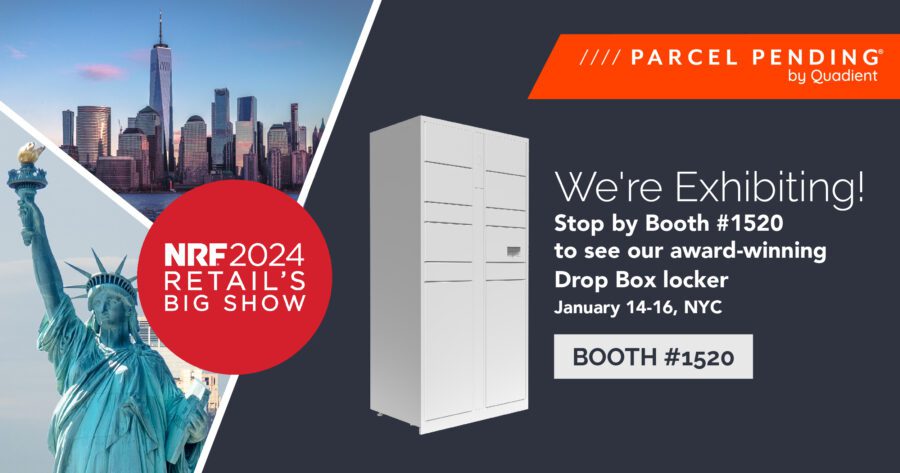
Open Locker Network
The benefits of trip-chaining for retailers, consumers and society
Written by: Parcel Pending
4 Min Read
Published: August 9, 2023
Updated: September 6, 2023
In today’s fast-paced world, consumers are always on the move—whether it’s a quick trip to the grocery store, collecting packages, or making an impromptu visit to grab a forgotten item from an online order placed the previous night. It’s evident that a hectic pace is ingrained in modern society, and to stay ahead of today’s modern shopping needs, retailers have integrated new offerings like Buy Online, Pick-Up In-Store (BOPIS), app shopping, and more to help keep up with the fast-paced consumer.
However, do the current online delivery models align with the needs of today’s time-constrained shoppers? If we were to create online fulfillment anew, being aware of everything we know from more than 25 years of e-commerce, would it stay similar? Our assessment of the matter indicates that the response to these two questions is ‘no,’ as our research has shown genuine patterns of dissatisfaction with online retailing in its current form. Nevertheless, by way of trip-chaining and the augmentation of delivery and collection points, we contend that this will open the doors to improved approaches by retailers to better serve the modern customer.
Trip chaining in a modern world
Trip chaining, whereby consumers combine errands or other activities into one outing rather than returning home between them, is a familiar practice. While this is not a new activity for consumers, they are now including order collection and returns during these trips. This is typically because home delivery is not an option, or they are worried about porch pirates grabbing their orders before they’ve made it home.
The risk of delivery theft remains one of the biggest off-putting factors at the virtual checkout, and with good reason, as a survey conducted by Safewise found 260 million delivered packages were stolen in 2022, 50 million more than in 2021. Delivery to home remains a favorite among consumers. Nevertheless, trip chaining may be a more beneficial way forward for consumers who are worried about parcel theft or other delivery and return challenges due to their busy lifestyles.
The importance of locker networks for trip chaining
While BOPIS has remained a popular choice for consumers looking for delivery alternatives beyond home delivery, it can become less convenient when the store is not conveniently located along a customer’s route. To tackle this issue, open locker networks have emerged as a crucial component of trip chaining. These networks are strategically placed in high-traffic areas within communities, such as retail stores, convenience stores, gas stations, gyms, libraries, or car washes. This streamlined setup allows consumers to seamlessly incorporate a quick stop to retrieve their deliveries or make returns, ultimately helping them reach their next destination more efficiently.
When businesses host a locker within an open locker network, they not only provide their customers with greater convenience for their orders and returns, but they can also open the door to substantial revenue expansion. Receiving their packages in a store location rather than at home can lead to higher footfall and potential impulse purchases. Our research has indicated shoppers are more likely to make additional purchases when collecting a parcel from a large supermarket (54%), small supermarket (52%), or newsagents (48%). Furthermore, 21% of those surveyed stated they would spend up to $20 or more when picking up their parcel from a locker.
Unintentional benefits
Considering the characteristics of the modern consumer, there’s a noticeable rise in eco-consciousness among customers. When it comes to receiving online orders, consumers are mindful of the emissions and road miles associated with parcel deliveries and the environmental impact of making individual trips. Because Customer Social Responsibility (CSR) is becoming a growing factor in customer shopping decisions, sustainability has become a key area of focus for retailers and businesses as they work to attract consumers who actively seek companies and products that are more CSR-focused. In fact, a study conducted by Capgemini found that organizations that have taken sustainability approaches saw a 77% increase in customer loyalty and a 63% increase in revenue.
At the heart of sustainability efforts is investment technology like parcel lockers within an open locker network. Parcel lockers help build the foundation for improved sustainability practices and initiatives, especially for deliveries and returns. To match this expectation, it’s crucial to provide eco-friendly alternatives for order pickup and returns. This includes investment into an open locker network to offer customers more sustainable options, especially when trip chaining is factored in.
Freedom of choice is imperative to the customer experience
The rise of online shopping has empowered consumers with unparalleled choice and convenience, revolutionizing how millions access goods. However, as retail’s landscape continues to evolve, the evolution of delivery methods must follow suit. Enter open locker networks—a modern solution that goes beyond traditional doorstep deliveries. By integrating these networks, we bridge the gap between convenience and sustainability, catering to both consumer preferences and environmental responsibility. This transformative step not only enhances secure order collection and returns but also aligns with the growing emphasis on eco-conscious practices in today’s retail realm. It’s a seamless fusion of innovation and mindful retailing, reshaping the way we approach transactions and setting a course for a more modern, sustainable shopping experience.
Contact us today to learn more about how Parcel Pending by Quadient can help your business.






